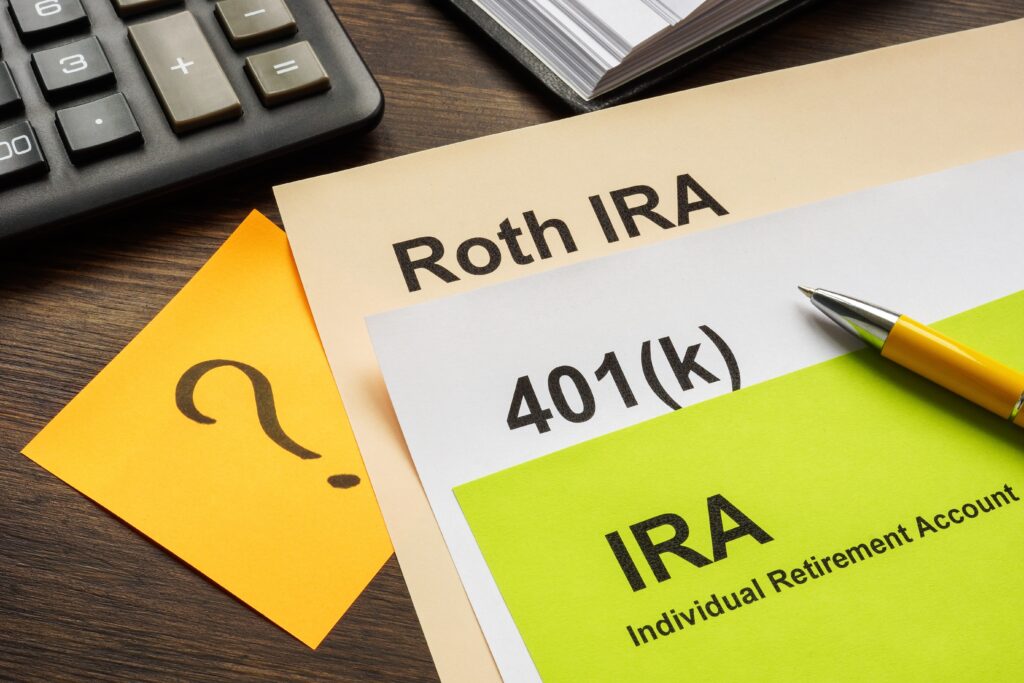
A Backdoor Roth IRA is a financial strategy that allows high-income earners to contribute to a Roth IRA, bypassing the income limits that typically restrict direct contributions. This strategy involves contributing to a traditional IRA and converting those funds into a Roth IRA. While it offers significant benefits, such as tax-free growth and withdrawals, it also has potential drawbacks, including tax implications and administrative complexities. This article will explore the pros and cons of a Backdoor Roth IRA to help you determine if this strategy suits your financial situation.
Backdoor Roth IRA: Pros
-
Tax-Free Growth and Withdrawals
One of the most appealing aspects of a Backdoor Roth IRA is that once the funds are in the Roth account, they grow tax-free. Additionally, qualified retirement withdrawals are tax-free, which can provide significant long-term tax savings, especially if you expect to be in a higher tax bracket in retirement.
-
No Required Minimum Distributions (RMDs)
Unlike traditional IRAs, Roth IRAs do not have required minimum distributions (RMDs) during the account holder’s lifetime. This means you can leave the money in the account for as long as you want, allowing it to grow tax-free indefinitely. This feature is particularly beneficial for individuals who do not need to tap into their retirement savings immediately or wish to pass on their wealth to heirs.
-
Bypassing Income Limits
Due to income limits, high-income earners are typically barred from contributing directly to a Roth IRA. For 2024, single filers with modified adjusted gross income (MAGI) above $161,000 and married couples filing jointly with MAGI above $240,000 cannot contribute directly to a Roth IRA. A Backdoor Roth IRA provides a legal workaround for these individuals by allowing them to contribute indirectly through a traditional IRA conversion.
-
Estate Planning Benefits
A Backdoor Roth IRA can be an effective estate planning tool. Since Roth IRAs are not subject to RMDs during your lifetime, you can leave the account intact for your beneficiaries. When heirs inherit a Roth IRA, they can take distributions tax-free, a valuable asset for passing on wealth.
-
Flexibility in Withdrawals
Roth IRAs offer flexibility when it comes to withdrawals. You can withdraw your contributions (but not earnings) at any time without penalty or taxes, making it an attractive option if you need access to funds before retirement. However, it’s important to note that converted funds are subject to the five-year rule (discussed below), which can limit immediate access.
-
Hedge Against Future Tax Increases
If you believe that tax rates will rise in the future or that your taxable income will be higher in retirement than it is now, paying taxes upfront through a Backdoor Roth conversion may make sense. The tax-free withdrawals in retirement could save you money if future tax rates increase.
Backdoor Roth IRA: Cons
-
Immediate Tax Liability
One of the biggest downsides of a Backdoor Roth IRA is the potential for an immediate tax bill upon conversion. If any part of your traditional IRA contributions was made with pre-tax dollars or if there are earnings on your contributions before conversion, you will owe taxes on those amounts when you convert them into a Roth IRA. This can create an unexpected financial burden if not planned for properly.
-
The Pro-Rata Rule
The IRS’ pro-rata rule complicates matters further by requiring that all traditional IRAs be treated as one account for tax purposes. If you have both pre-tax and after-tax contributions across multiple IRAs, the pro-rata rule mandates that any conversion must include both types of funds proportionately. This means that even if you make an after-tax contribution specifically for conversion, part of that conversion may still be subject to taxes based on the ratio of pre-tax funds in all your IRAs.
For example, if 80% of your total traditional IRA balance consists of pre-tax contributions and 20% consists of after-tax contributions, 80% of any conversion will be taxable. This can significantly reduce the strategy’s appeal for individuals with large pre-tax balances.
-
Administrative Complexity
A Backdoor Roth IRA requires careful planning and record-keeping. Each year you make nondeductible contributions and convert them into a Roth IRA, you must file IRS Form 8606 to track your basis in nondeductible contributions. Failure to do so could result in double taxation—once when you contribute and again when you withdraw.
Moreover, because each converted amount has its own five-year holding period (discussed below), managing multiple conversions over time can become administratively burdensome. Keeping track of these details is crucial to avoid penalties or unintended tax consequences.
-
Five-Year Rule
The five-year rule applies separately to each conversion made into a Roth IRA. This rule states that converted funds must remain in the account for at least five years before they can be withdrawn without penalty (if you’re under age 59½). If you withdraw converted funds before this period ends, you may face taxes and penalties on those withdrawals.
This rule adds complexity because each conversion has its own five-year clock. If you anticipate needing access to these funds within five years, a Backdoor Roth may not be the best option.
-
Potential Impact on Social Security and Medicare
If you’re older or approaching retirement age, converting traditional IRAs into a Roth through the backdoor strategy could increase your taxable income in the year of conversion. This increase could push more of your Social Security benefits into taxable territory or raise your Medicare premiums due to higher reported income levels.
This unintended consequence could negate some of the advantages offered by a Backdoor Roth IRA for retirees or those nearing retirement who rely on Social Security or Medicare benefits.
-
Uncertainty About Future Legislation
While the Backdoor Roth strategy is currently legal and recognized by the IRS, it is not guaranteed to remain available indefinitely. Congress has already considered eliminating it in past legislative proposals like the Build Back Better Act, and future changes could close this loophole.
If you’re relying heavily on this strategy for long-term retirement planning, it’s essential to stay informed about potential legislative changes that could affect its viability.
Is a Backdoor Roth IRA Right for You?
The decision to use a Backdoor Roth IRA depends on several factors:
-
Your Current Tax Situation:
If you’re in a high-income bracket now but expect a lower income in retirement, paying taxes upfront through a Backdoor Roth might not make sense.
-
Existing Traditional IRAs:
If you have significant pre-tax assets in traditional IRAs, the pro-rata rule could lead to substantial tax liabilities upon conversion.
-
Need for Flexibility:
Other strategies might be more appropriate if you’ll likely need access to converted funds within five years or want simpler administration without tracking multiple conversions and forms annually.
-
Long-Term Tax Planning:
A backdoor Roth could be beneficial if you’re concerned about rising tax rates or want more control over withdrawals without RMDs during retirement.
Conclusion
A Backdoor Roth IRA offers high-income earners an opportunity to enjoy the benefits of tax-free growth and withdrawals typically reserved for those within income limits. However, it comes with complexities such as immediate tax liabilities due to the pro-rata rule and administrative burdens like tracking conversions over time.
Before pursuing this strategy, it is essential to consult with financial advisors or tax professionals who can help assess whether it aligns with your overall retirement goals and financial situation while minimizing potential pitfalls like unexpected taxes or penalties from early withdrawals.
Eric C. Jansen, ChFC , is the founder, president, and chief investment officer of Finivi Inc., a Westborough, Massachusetts-based firm offering retirement income planning and investment management services nationwide.
, is the founder, president, and chief investment officer of Finivi Inc., a Westborough, Massachusetts-based firm offering retirement income planning and investment management services nationwide.
For a complimentary consultation, complete this request form or call (800) 530-6635 today.
Disclaimer: This information is for educational purposes only and should not be considered legal or tax advice. Finivi Inc. makes no representations regarding the accuracy or completeness of linked third-party content and assumes no responsibility for any outcomes resulting from its use. External links do not imply endorsement.












You must be logged in to post a comment.